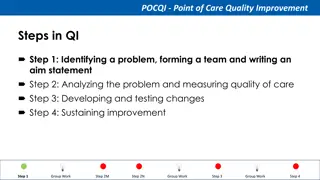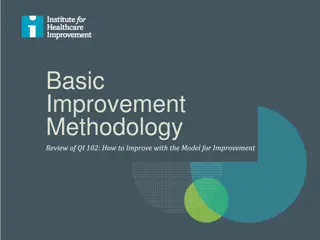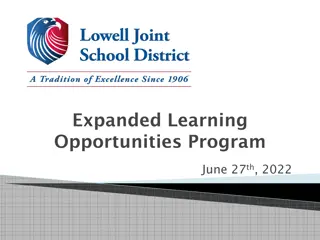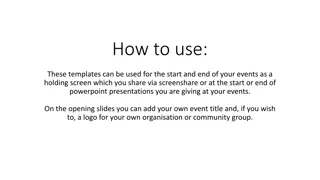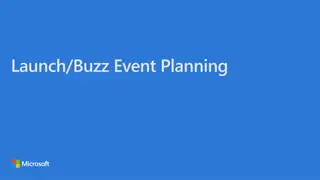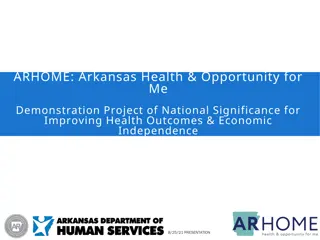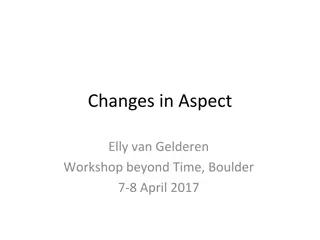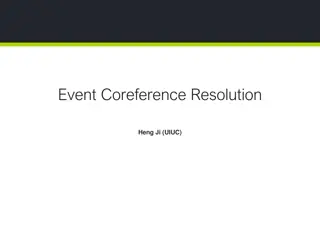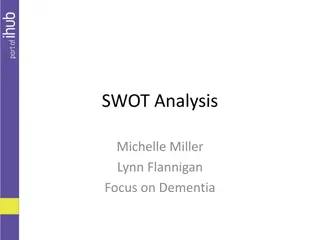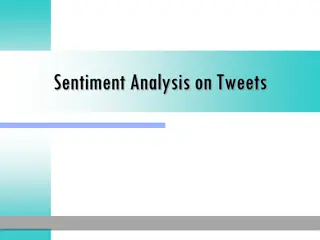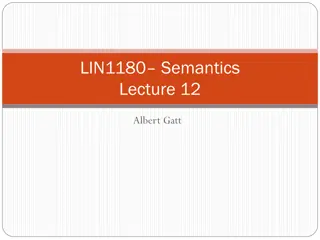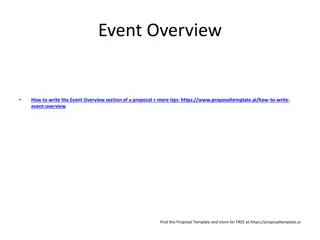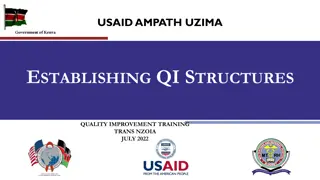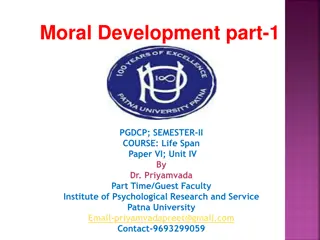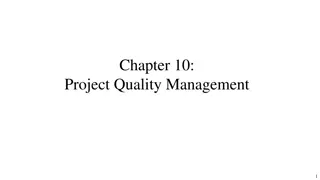Effective Learning Event Analysis: A Key Aspect for Quality Improvement
Quality Improvement is a crucial aspect of healthcare, and conducting a Learning Event Analysis (LEA) is an essential skill that benefits professionals, patients, and practices. It involves choosing relevant cases that prompt reflection, learning, and practice change. The process should be a practice activity involving all relevant individuals, promoting discussions and actions for continuous enhancement.
Download Presentation

Please find below an Image/Link to download the presentation.
The content on the website is provided AS IS for your information and personal use only. It may not be sold, licensed, or shared on other websites without obtaining consent from the author.If you encounter any issues during the download, it is possible that the publisher has removed the file from their server.
You are allowed to download the files provided on this website for personal or commercial use, subject to the condition that they are used lawfully. All files are the property of their respective owners.
The content on the website is provided AS IS for your information and personal use only. It may not be sold, licensed, or shared on other websites without obtaining consent from the author.
E N D
Presentation Transcript
RCGP LEARNING EVENT ANALYSIS TEMPLATE GUIDANCE Lubna Latif CRUK Health Facilitator Bradford and Leeds
Why do a learning event analysis?
QOF requirement Quality Improvement activity. CPD: Describing and analysing a learning event is an important skill that will be scrutinised in your appraisal and revalidation. Develop skills: This template gives you and your practice colleagues an opportunity to develop this. A LEA done well is worth the effort for the benefits it can bring for you, your patients, and the practice as a whole.
Choice of case is important
Choose a case that requires: 1. Significant reflection 2. Likely to generate learning and change to practice. Good examples are a delayed diagnosis or a patient diagnosed after an emergency admission.
1. Choose a case that requires significant reflection, and is likely to generate learning and change to practice. Good examples are a delayed diagnosis or a patient diagnosed after an emergency admission. 2.Avoid cases that are unlikely to provoke new learning, such as a patient with a breast lump appropriately referred on first presentation.
1. Choose a case that requires significant reflection, and is likely to generate learning and change to practice. Good examples are a delayed diagnosis or a patient diagnosed after an emergency admission. 2. Avoid cases that are unlikely to provoke new learning, such as a patient with a breast lump appropriately referred on first presentation. 3.Only consider cases involving external problems (e.g. hospital delays) if the practice can demonstrate that, as a consequence of that case, it has been instrumental in attempts to remedy the external problem.
An effective LEA is a practice activity
1.LEA is best done as a practice activity, perhaps in the course of a practice team meeting. 2. It should specify who participated and who was responsible for actioning any changes. 3. The LEA report should say whether all relevant individuals attended and whether the conclusions should be discussed with any other staff inside or outside the practice.
1. LEA is best done as a practice activity, perhaps in the course of a practice team meeting. 2.Participants: It should specify who participated and who was responsible for actioning any changes. 3. The LEA report should say whether all relevant individuals attended and whether the conclusions should be discussed with any other staff inside or outside the practice.
1. LEA is best done as a practice activity, perhaps in the course of a practice team meeting. 2. It should specify who participated and who was responsible for actioning any changes. 3. The LEA report should say whether all relevant individuals attended and whether the conclusions should be discussed with any other staff inside or outside the practice.
1. An effective LEA not only identifies the learning points and actions to be taken but puts those changes into effect and monitors their impact. Specify who in the practice (staff member or groups) will be responsible for your action points and decide how their impact will be monitored.
An effective LEA not only identifies the learning points and actions to be taken but puts those changes into effect and monitors their impact. Specify who in the practice (staff member or groups) will be responsible for your action points and decide how their impact will be monitored.
An external reviewer can only assess what is written
1.Try to address all the points suggested under each question, and any others you consider relevant. If you don t write key information down, the reviewer will assume that it was not considered or done. 2. Provide sufficient background to enable the external reviewer to understand what happened. It is best to provide details of all potentially relevant interactions with the patient for the year prior to diagnosis.
1. Try to address all the points suggested under each question, and any others you consider relevant. If you dont write key information down, the reviewer will assume that it was not considered or done. 2.Provide sufficient background to enable the external reviewer to understand what happened. It is best to provide details of all potentially relevant interactions with the patient for the year prior to diagnosis.
Points to consider Who in your practice will take responsibility for pulling together cases to be reviewed? What cases will be discussed, late diagnosis, emergency diagnoses? Where will the cases be reviewed? PCN learning sessions monthly When will your PCN review cases, eg, monthly, quarterly etc. Who will follow up on actions, learnings etc.
Lubna Latif Cancer Research UK Facilitator Lubna.Latif@cancer.org.uk 07827 986437




